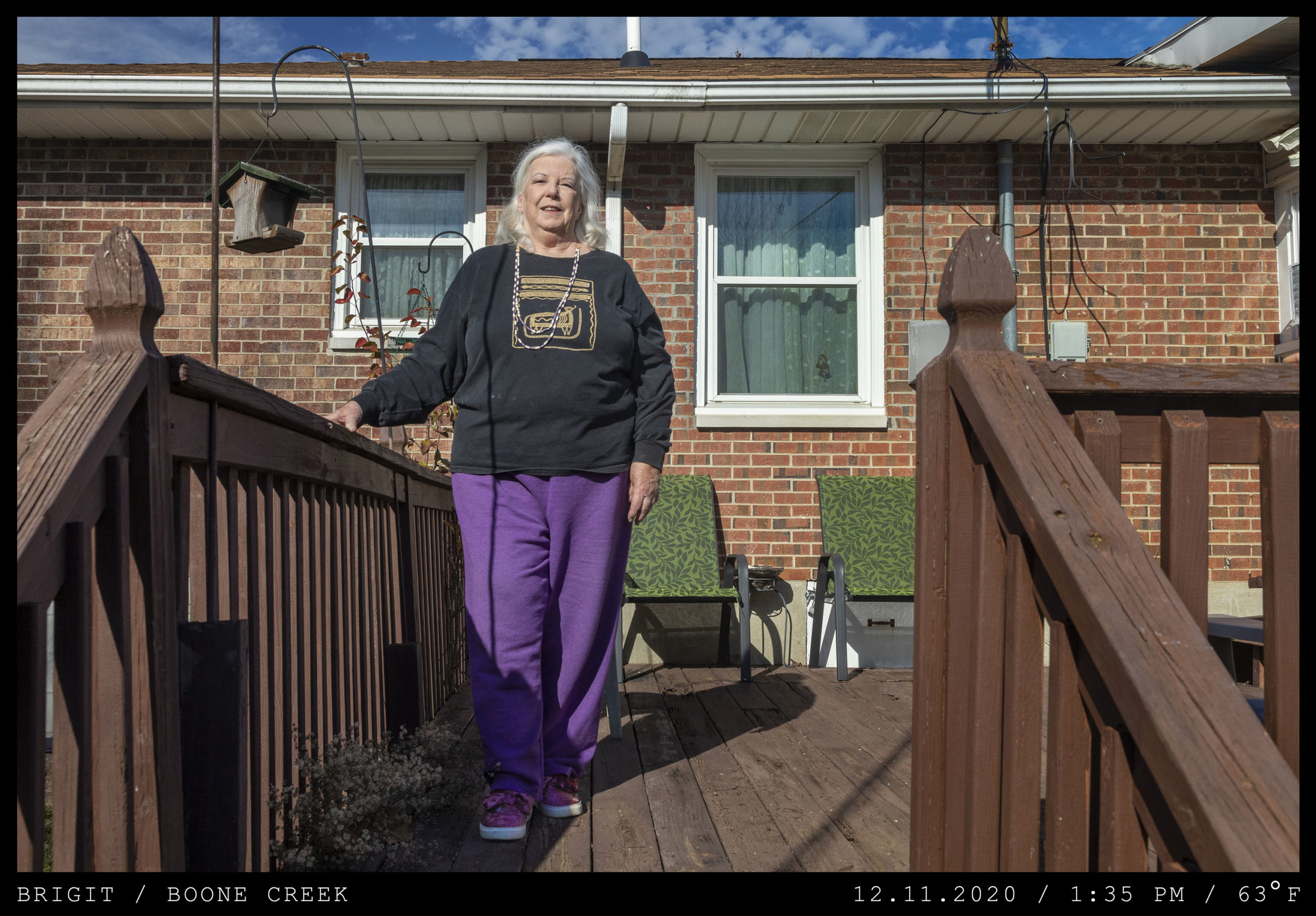Brigit Truex is a Lexington-based artist and poet.
Brigit: “How to be a writer/artist during the epidemic?
This almost-year of basic ‘hermitage’ has been an extraordinary experience to me as an artist/poet. I try to neither look back at the unreal time it has taken on the calendar, nor ahead at the unpredictable time it will continue to impact us all into next year. Survival mode calls for a ‘twelve-step’ approach, namely ‘one day at a time,’ I believe. Artistically, and coincidently, politically, it has been a particularly challenging time. Ironically, being creative is essentially a solitary experience—at least during the incubation/creative period. That being said, I realize that I also depend upon the affirmation of others, to a lesser and greater degree, once a work has been completed. The acceptance of peers confirms the belief one has about the goal, and the completion. But—failing that, for me in many instances—I can still believe in what I set out to do, regardless of others’ opinions. I know what I had in mind and that may have to suffice.
Perhaps because of this solitude, being an artist in this lock-down time has been somewhat less of a burden than for others who are conditioned to living/working with others. Indeed, the impact can be a gift of inspiration, an undeniable stimulus, however unpleasant. The same can be said of the political storm roiling around us as well. In that case, I have had to address it in my writing (usually I focus on the more significant natural world)—and I find that the creative process has indeed helped to focus, defuse, infuse my words in a surprising and satisfying way. Writing and painting can be cathartic, release valves, a device for focusing and removing extraneous words and clutter, to distill feelings into the sharpest, most direct manner of communicating with others. That is ultimately what art (visual/written) is all about—telling your self to your audience, bravely. It can be ambiguous—that’s an element I relish often in my poems—I like the ‘option’ of word choices. In painting, visual art, there may well be more subtle images, details which ideally trigger a thought, a memory, an emotion. How the work is interpreted is out of my control, but the delight in bringing it forward is within me.
But back to the central question of ‘how to manage’ during this unique time? I rely sparingly on electronic media for communicating. I have to trust my instincts on what I create. By the same token, however, I find I do need to complete the creative process by sharing the work in some fashion. Photographs can be snapped and forwarded; poems can be downloaded. Better than a silent void, for sure. I continually come back to the same thought, however, that I must not be overwhelmed by that insidious, mutable virus. I may not be stymied on confronting it, or the perceived threats surrounding our very democracy. Looking more closely at my work, I realize that, in each and whatever form it presents itself, creativity is vital to me—it’s breath, the light of the skies touching what is outside my window, nourishment for my inner self. It simply must be expressed for me to be me. Non-negotiable. Unbidden. A gift that must be handed to whomever would share it with me, no strings, no expectations.
So, again, it makes me wonder how I will react once this has passed? Say in a year or two, five? I imagine the pressures on us now will have some response, leave some ‘dents’ or ‘swales’ in our (creative) surfaces. Maybe I will be more dependent upon the vision or response of others later on; perhaps less so, having gone through this trial primarily alone? I cannot say, yet. I just know I must express myself, when impelled, in either/or both arts that speak to me. I cannot be silenced. And, humbly, ideally, my voice, our voices, will continue to find an audience decades from now, laying out unique versions and visions of this startling time. Such a potential promise spurs me on!”

